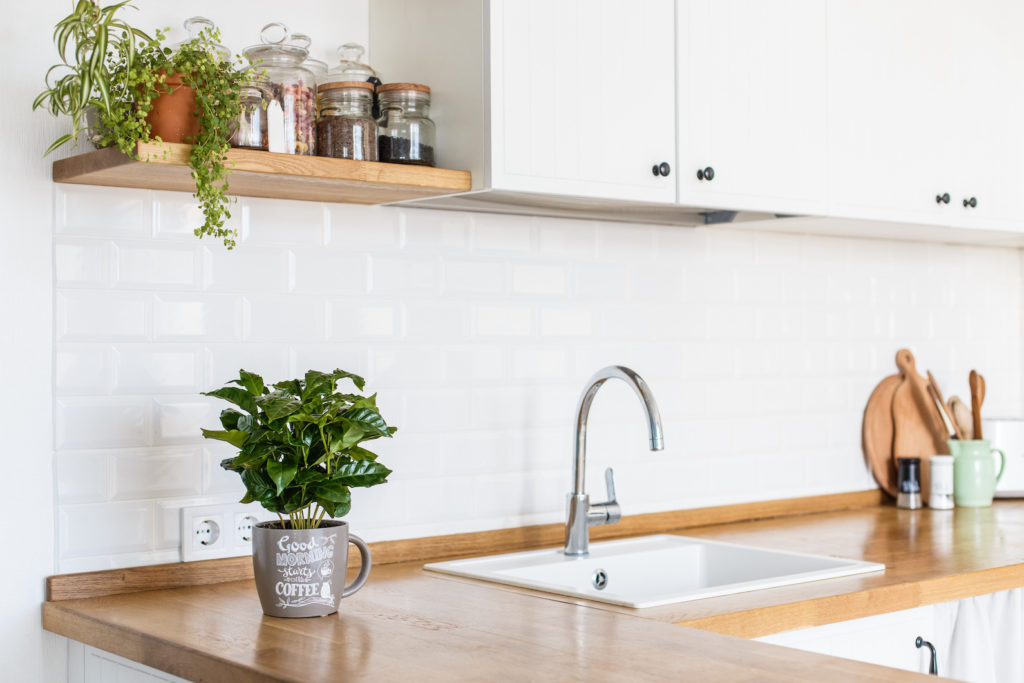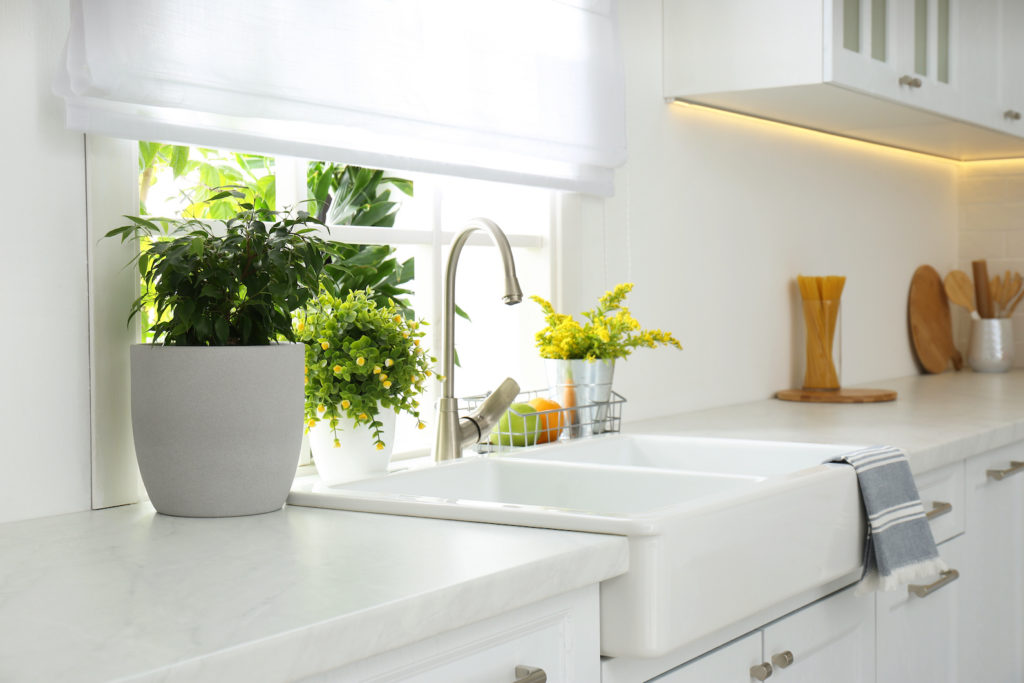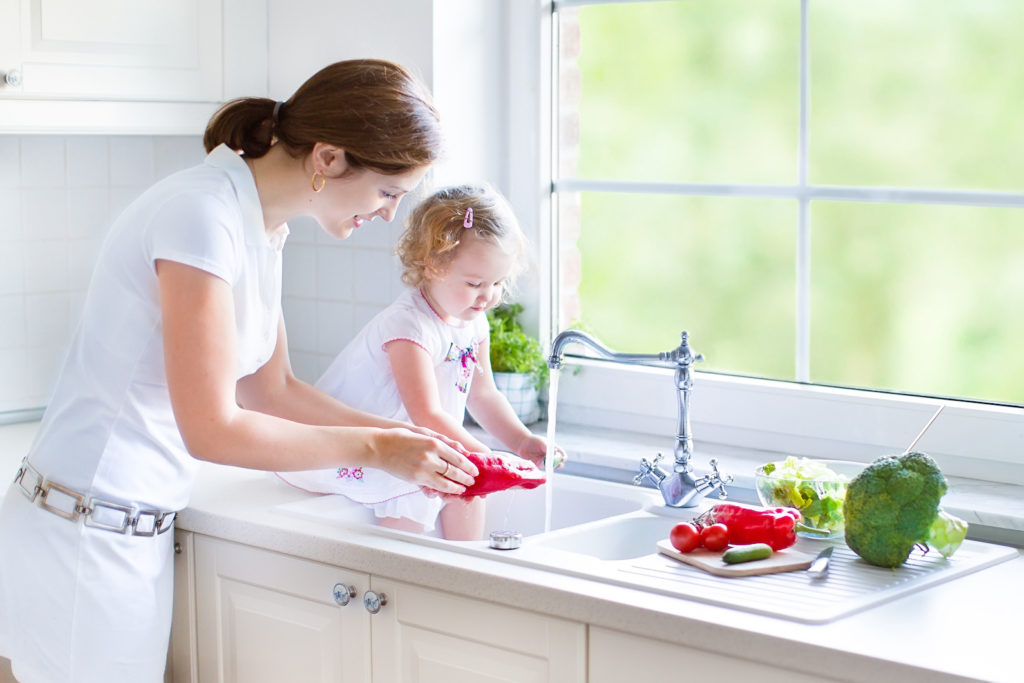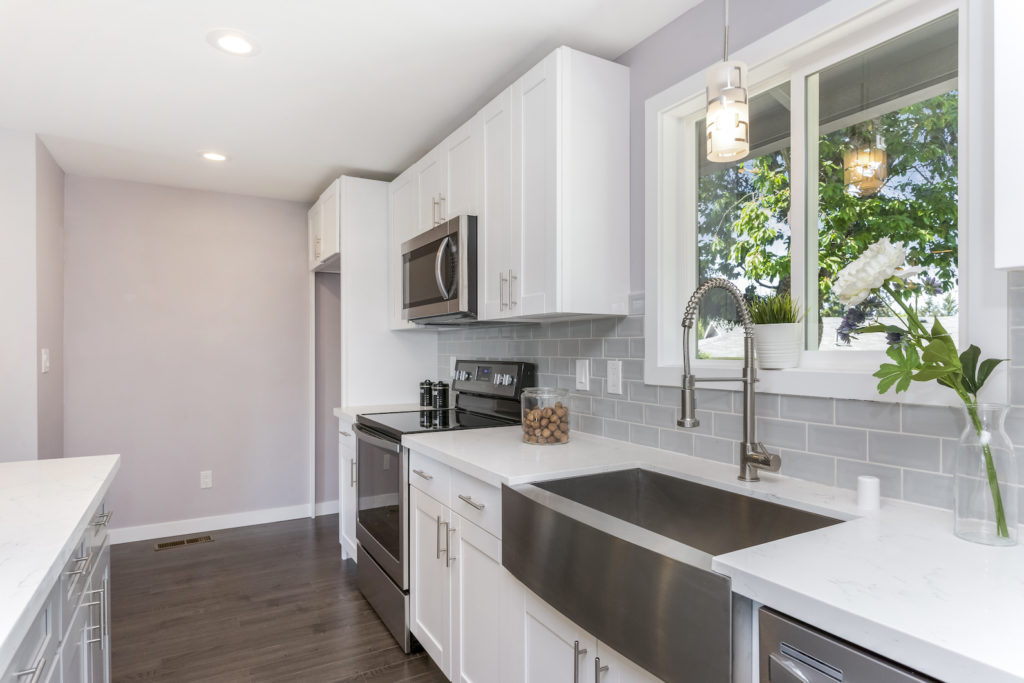Looking for the best types of kitchen sinks for your home?
When you are in the market for a new kitchen sink, there is no shortage of options to choose from. From stainless steel to cast iron sinks, many homeowners find themselves overwhelmed by all their choices and unsure how to handle your kitchen plumbing when installing your brand new sink. Today we’ll compare and contrast the different types of kitchen sinks that are equally stylish, practical, and functional. Let’s dive in!
Drop-In Kitchen Sinks
Drop-in sinks are the types of kitchen sinks that you’ll most commonly see in new or remodeled kitchens. These kitchen sinks come with two large steel bowls that offer a generous amount of space for cooking and cleaning up afterward. Drop-in sinks also have an integrated drain assembly, which means there is no need to purchase any additional parts other than your choice of faucet.
To use this type of sink, it must be mounted on top of your countertop material (granite, marble, etc.). It’s important to note that drop-ins come with significant weight–the average size can weigh 25, 50, or even 100 pounds.
Pros:
- Provides lots of counter space when it’s mounted on your top surface material
- Integrated drain assembly included with purchase
- Large bowls provide plenty of water capacity for washing large pots or dishes in one sitting
Cons:
- It’s very heavy and may require cutting granite counters to make it fit during the installation process. It may require a professional installer depending on skill level and project timeline.
Farmhouse Style Kitchen Sinks
Farmhouse sinks are types of kitchen sink that will offer a more rustic look to your kitchen. They come with two bowls, one large and the other smaller for washing vegetables or doing dishes—plus a prep area just above where you can place cutting boards or small appliances like blenders.
These types of sinks have an integrated drain assembly as well. In addition, of course, the installation process is much more complex to install because of its heavy weight. However, there’s no need for installing faucets into the counter, only screwing brackets into wall studs via pre-drilled holes.
Pros:
- Provides more counter space than a single bowl drop-in types of kitchen sinks
- Having a preparation area for small tasks like chopping vegetables or washing dishes in the sink is helpful when cooking.
Cons:
- The smaller bowl may not be large enough to handle all types of pots and pans without spilling into the larger bowls while being washed.
- The surface material on top should be sturdy and resistant to scratching from dirt or constant scrubbing with dish soap.
Workstation Kitchen Sinks
Workstation types of kitchen sinks are quite a step away from traditional types. They come with an attached cutting board and movable counter space that can be pulled out or pushed in depending on the task at hand—as well as two sinks, one large for washing pots and pans, another small bowl for doing dishes or preparing food.
This type of kitchen sink also requires wall brackets to install; however, these sinks are going to sit on the counter similar to drop-ins. Most times they’ll need to have a custom opening because of its special attachments and work surfaces.
Pros:
- Provides lots of work surface area, so you don’t have to worry about losing valuable countertop space.
- Allows you more flexibility when cooking to use a cutting board or a sink for washing dishes.
Cons:
- Cleaning can be more complex because the types of kitchen sinks leave little room to reach into the sink unless your workstation is removable.
Stainless Kitchen Steel
Unlike cast iron sinks, stainless steel is much lighter and easy to install. It’s also a good choice if you plan on using your sink as part of an open kitchen design concept. However, it can become scratched or pitted from wear and tear with time, which might make those scratches noticeable when they are under running water. Therefore, this type of sink must be well cleaned after every use to avoid any types of build-up that could lead to rusting or other types of damage over time.
Pros:
- Great for an open kitchen design as it is easy to clean and lightweight
- Easy installation process
Cons:
- Requires a lot of care to prevent scratches
- More prone to becoming pitted with wear and tear than cast-iron types
Choosing the Best Sink for Your Home
To wrap things up, different types of kitchen sinks will vary significantly in price, weight, and installation processes. Some sinks may require a professional installer and others may even require you to alter your countertops. If you want to be able to DIY your next sink install then we recommend choosing a light material such as stainless steel and a sink type that doesn’t require modification to your existing opening.
To help handle all of your kitchen sink and plumbing needs, reach out to the expert team at AJ Alberts. We can help properly install your new sink and help you prevent any damage or plumbing issues down the road. Contact us today to learn more!







